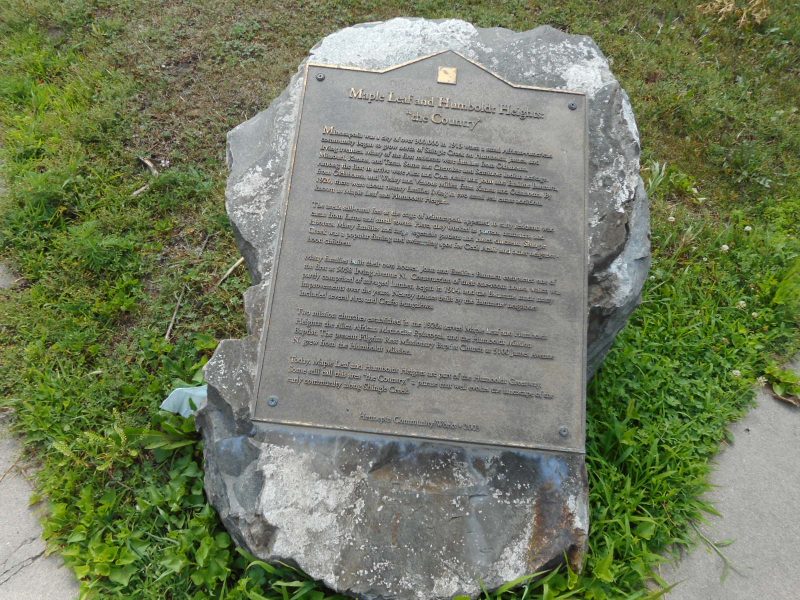
Hidden in plain sight, a Rock of History amongst some bushes on Humboldt and 50th Avenues North reads as follows:
Minneapolis was a city of over 300,000 in 1913 when a small African-American community began to grow north of Shingle Creek on Humboldt, James and Irving Avenues. Many of the first residents were families from Oklahoma, Missouri, Kansas and Texas. Some had Cherokee and Seminole Indian heritage. Among the first to arrive were Alex and Cora Adair, and John and Emiline Bannam from Oklahoma, and Wesley and Vealous Miller from Kansas and Oklahoma. By 1920, there were about 20 families living in two small real estate additions known as Maple Leaf and Humboldt Heights.
The area’s still-rural feel at the edge of Minneapolis appealed to early residents who came from farms and small towns. Here, they worked as porters, teamsters and laborers. Many families had large vegetable gardens and raised chickens. Shingle Creek was a popular fishing and swimming spot for Cecil Adair and other neighborhood children.
Many families built their own house. John and Emiline Bannam completed one of the first at 5058 Irving Avenue North. Construction of their one-room house, which was partly comprised of salvaged lumber began in 1914, and the Bannams made many improvements over the years. Nearby houses built by the Bannams’ neighbors included several Arts and Crafts Bungalows.
Two mission churches established in the 1920s served Maple Leaf and Humboldt Heights: the Allen African Methodist Episcopal, and the Humboldt Mission Baptist. The present Pilgrim Rest Missionary Baptist Church at 5100 James Avenue North grew from the Humboldt Mission.
Today, Maple Leaf and Humboldt Heights are part of the Humboldt Greenway. Some still call this area “the Country,” a phrase that well evokes the landscape of the early community along Shingle Creek.
Hennepin Community Works – 2009
Breedlove adds: The above site of three blocks was sold in 1913 to the African American families by real estate mogul Samuel Thorpe. However, by 1927, 200 houses and a golf course had been built by Thorpe Realty in a subdivision of Edina where “Homebuyers faced many restrictions as to the cost of the houses they built, the kinds of trees they could plant, the animals they could keep, etc. Most notably, occupants were strictly restricted to the “white or Caucasian race.” All restrictions were to expire on or before January 1, 1964, except the one regarding race, which was to remain in force forever. All such race-specific real estate covenants were invalidated by the U.S. Supreme Court in 1948.
From St. Louis Park Historical Society Race, Creed, and Color
The impact of past “red-lining” by many real estate companies in Minneapolis continues today. For more information and recent research on restrictive housing, Google the work of Kirsten Delegard.


